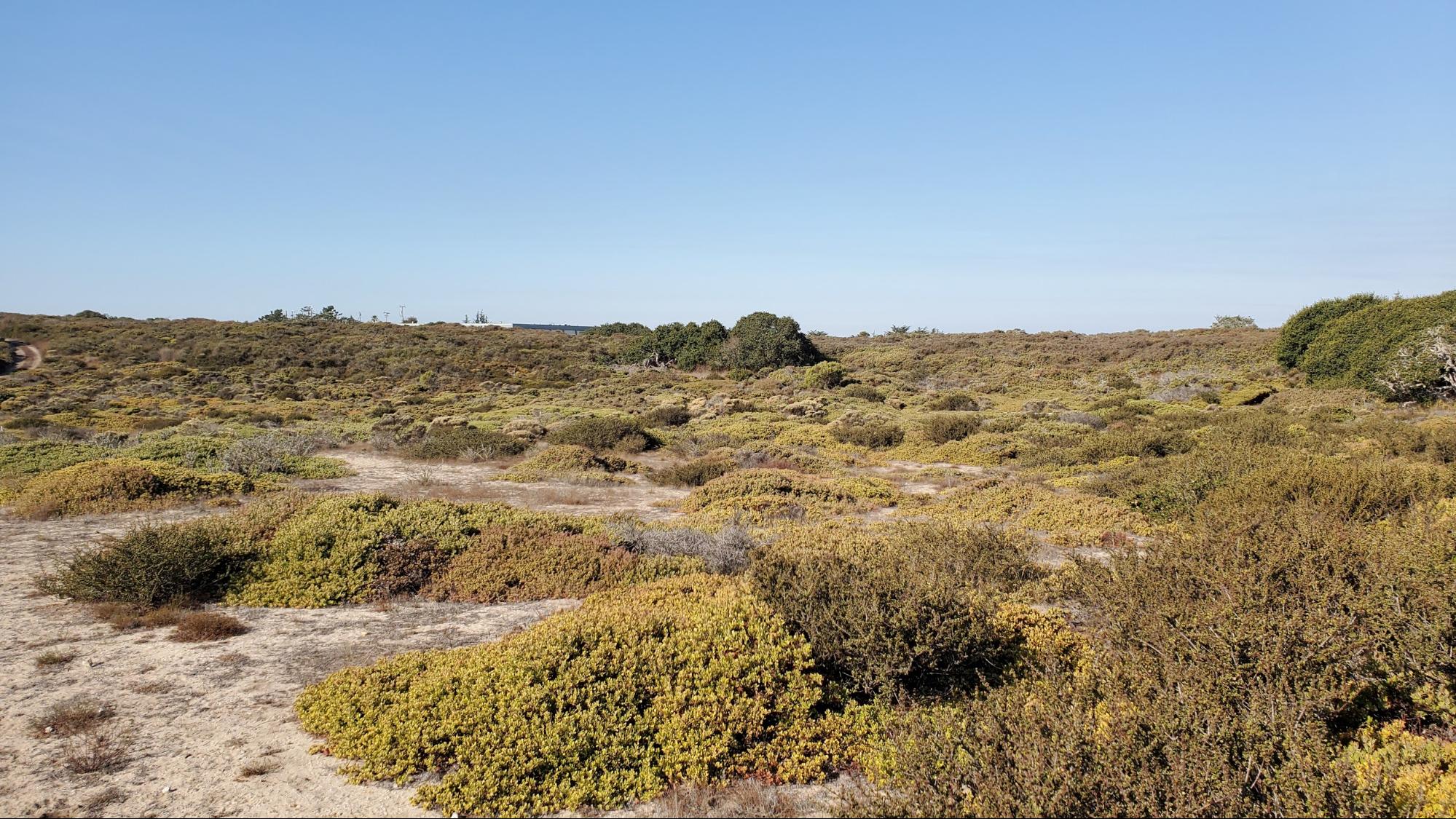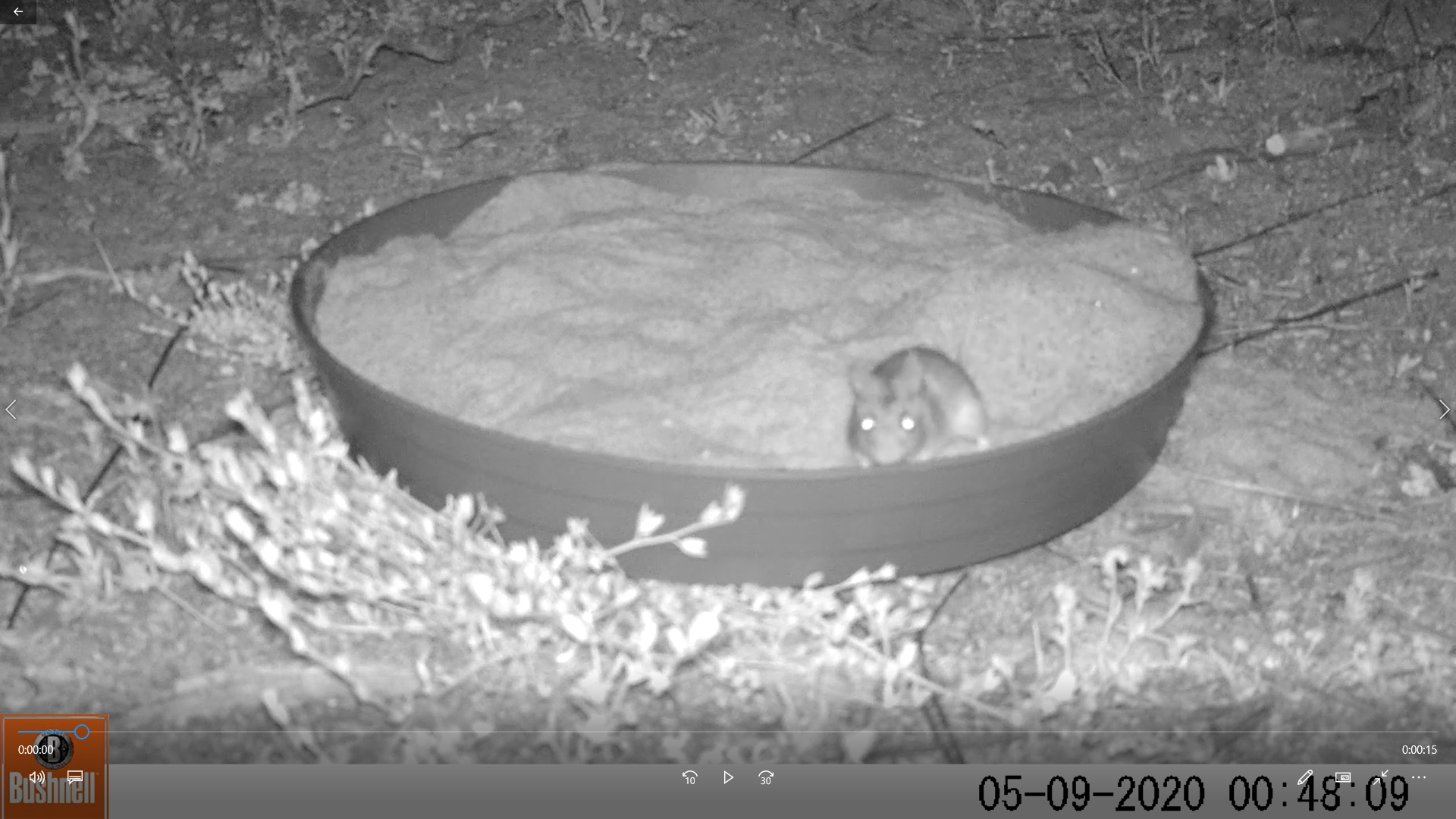The Why

Predators and prey are embroiled in a complex and never-ending game of hide-and-seek that often shapes ecosystems. Traditionally, researchers have studied predator-prey interactions focusing on the direct effects of animals eating each other, but in recent years their aim has shifted to examine how fear of predation may be influencing prey behavior. The landscape of fear manifests itself in the way that animals judge their environment and adjust their behavior in order to balance two competing interests: avoiding starvation, and avoiding predators.
Animals assess their environment through direct (scent, sight, smell, touch) and indirect (moonlight, distance from cover, habitat type, etc.) cues. The importance of these cues varies among species and environments. For my research, I examined how auditory predator cues and distance from cover affected foraging behaviors in rodents. The goal of my research was to determine how these factors influenced foraging behaviors to better understand what drives their distribution on a landscape.
The Where
My research took place within maritime chaparral at UC Santa Cruz Fort Ord Natural Reserve (FONR), located in Marina, CA. Maritime chaparral is a rare shrubby habitat type found only along select portions of the California coast. It is often dominated by various manzanita species. The focal rodents for my study included three species of deer mice and one pocket mouse. These were the most prevalent nocturnal rodents within the maritime chaparral at FONR.
The How
 I used barn owl vocalizations (direct predator cue) and distance from cover (indirect predator cue), to test how fear of predation affected rodent foraging behaviors. I used plastic trays filled with a set amount of sand and seeds to measure food intake, and motion-activated field cameras to determine time spent foraging in trays and mean number of visits to trays. At each site, I placed trays at 0m, 1m, and 2m from the nearest cover to measure the effects of distance from cover. I used portable speakers to test how food intake and foraging behaviors varied when exposed to set intervals of barn owl vocalizations, wrentit calls, and no calls. Only one type of auditory cue was played each night. Barn owl calls were used because they are a major predator of nocturnal rodents at FONR and their calls are one of the few reliable cues that indicate their presence. Wrentit’s are non-predatory birds prevalent at FONR and their calls acted as a control. Distance from cover was studied as it is an important factor in rodent foraging, with predation pressure from aerial predators increasing further from cover. As a result, rodents eat food underneath or near cover first, making it more profitable but dangerous to forage further from cover.
I used barn owl vocalizations (direct predator cue) and distance from cover (indirect predator cue), to test how fear of predation affected rodent foraging behaviors. I used plastic trays filled with a set amount of sand and seeds to measure food intake, and motion-activated field cameras to determine time spent foraging in trays and mean number of visits to trays. At each site, I placed trays at 0m, 1m, and 2m from the nearest cover to measure the effects of distance from cover. I used portable speakers to test how food intake and foraging behaviors varied when exposed to set intervals of barn owl vocalizations, wrentit calls, and no calls. Only one type of auditory cue was played each night. Barn owl calls were used because they are a major predator of nocturnal rodents at FONR and their calls are one of the few reliable cues that indicate their presence. Wrentit’s are non-predatory birds prevalent at FONR and their calls acted as a control. Distance from cover was studied as it is an important factor in rodent foraging, with predation pressure from aerial predators increasing further from cover. As a result, rodents eat food underneath or near cover first, making it more profitable but dangerous to forage further from cover.
The Result
 With the videos I recorded, I was able to separate the foraging behaviors of deer mice and pocket mice. This was crucial as pocket mice have unique morphological adaptations, such as external fur-lined pouches and enlarged auditory bulla, which allows them to forage differently than deer mice. I found that for both deer mice and pocket mice, owl vocalizations did not affect foraging(click the hyperlink to check out a cool example!), but distance from cover did. The amount of seeds consumed and mean number of visits were reduced in trays further from cover for all species, but only deer mice reduced their total time spent foraging in trays in response to increased distance from cover.
With the videos I recorded, I was able to separate the foraging behaviors of deer mice and pocket mice. This was crucial as pocket mice have unique morphological adaptations, such as external fur-lined pouches and enlarged auditory bulla, which allows them to forage differently than deer mice. I found that for both deer mice and pocket mice, owl vocalizations did not affect foraging(click the hyperlink to check out a cool example!), but distance from cover did. The amount of seeds consumed and mean number of visits were reduced in trays further from cover for all species, but only deer mice reduced their total time spent foraging in trays in response to increased distance from cover.
For my focal species, these results show that the indirect cue of distance from cover played a much greater role in determining foraging behaviors than the direct cue of barn owl vocalizations. Indirect cues provide more consistent and reliable information pertaining to multiple predators, while direct cues only supply information about specific predators. As a result, animals may utilize indirect cues more readily than direct cues when making foraging decisions. It is important to note that resident barn owls can be heard nightly at FONR, so it is possible that my focal species may be desensitized to their calls.
The Relevance
My study highlights the importance of using motion-activated field cameras. Field cameras made it possible to study the diverse rodent community at FONR, by allowing me to identify what species were foraging in my trays. They also granted me the ability to quantify specific foraging behaviors, such as total time spent in trays and mean number of visits, that food intake alone could not. My study provides a novel understanding of what factors influence nocturnal rodent foraging behaviors in maritime chaparral, which may help to inform future management plans within this rare habitat.
The results of my research can directly contribute to developing conservation and management plans for rodents. All of my focal species prioritized foraging in trays near cover compared to trays further from cover. This information suggests that foraging near cover is considered safer. Therefore, increasing the amount of cover within a habitat would provide rodents with greater access to safer foraging patches. From a pest management perspective, maintaining open areas adjacent to crops may help mitigate potential damage rodents cause to agriculture, as rodents are unlikely to cross large open areas while foraging. If effective, this method could help reduce the need for, or amount of, rodenticides which are commonly used throughout California and can have cascading impacts on meso and top predators. By understanding the factors that influence foraging behaviors, we gain valuable insight into what drives their distribution across a landscape.
Acknowledgments
First and foremost, I would like to thank my advisor Gage Dayton, who’s guidance and advice was invaluable throughout each step of my research. Next, I would like to thank Joe Miller, who graciously volunteered his time and knowledge as he helped me search for study sites at FONR. Lastly, I would like to thank the Kenneth S. Norris Center for providing me with the funding necessary to carry out this project. Without all the help I received, none of this would have been possible.
